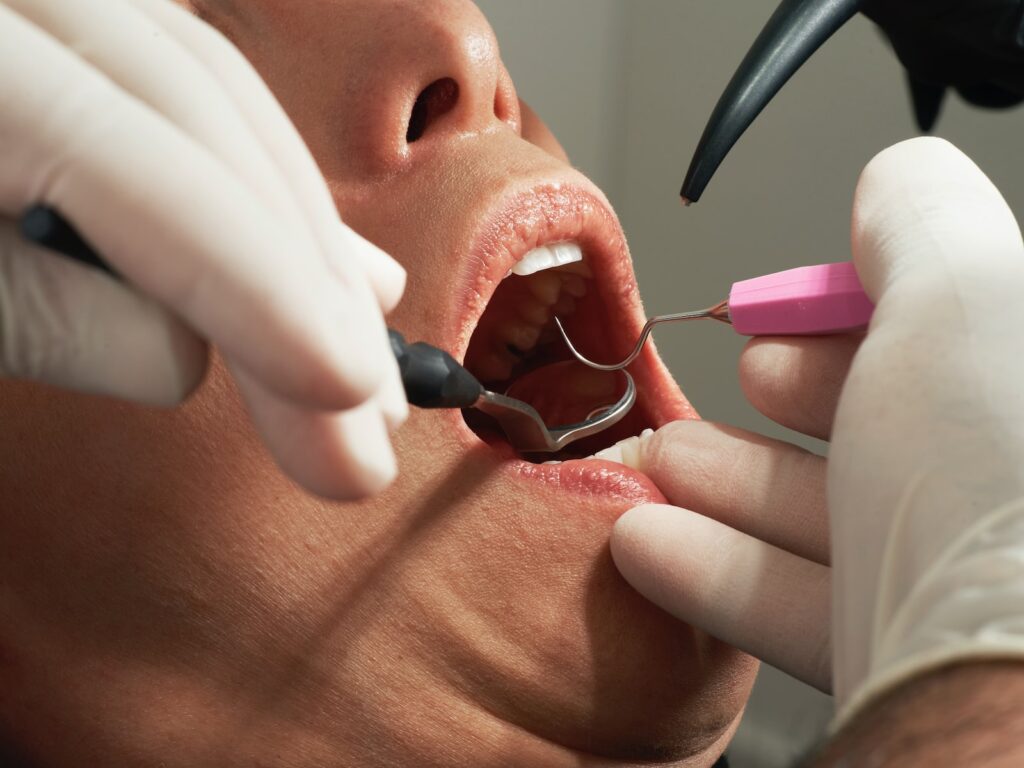6 Failed Root Canal Symptoms – How To Recognize Failed Root Canal and What To Do
While there are many dental procedures to treat our teeth the right way, some procedures do not go as expected, resulting in rather severe consequences. One such dental procedure is the root canal. If you are suffering from a failed root canal, and are living in or nearby Edina, MN, please reach out to our general dentistry that treats root canals to get it checked asap.
A root canal procedure is necessary to extract the pulp and nerve that have been affected by infection or decay in a tooth. When an infectious tooth exhibits symptoms that necessitate rapid emergency root canal treatment, root canals are usually done. They can guard your tooth against developing another infection if carried out correctly. However, not all root canal therapies are successful. If you’ve had a failed root canal, the following information will be helpful for you to save your tooth.
In This Article:
- 6 Symptoms of a Failed Root Canal
- Reasons for a Failed Root Canal
- What To Do for a Failed Root Canal
- Root Canal Retreatment
- Tooth Extraction
- Can You See a Failed Root Canal on X-ray?
- Conclusion
6 Symptoms of a Failed Root Canal
A failed root canal is a serious problem requiring an urgent dentist trip. You may still show failed root canal symptoms after months or years have passed. This could involve more sensitive teeth or discomfort. Some of these signs and symptoms are the same as the ones that initially prompted the urgent root canal. Here are a few signs of a failed root canal that you need to be aware of:
1. Swelling After Tooth Treatment
Slight swelling in or around the treated tooth during the first several days. Swelling could indicate an infection that has to be treated right away. Swollen tissue is often delicate, sensitive, and prone to producing pus.
2. Soreness After Failed Root Canal
Soreness for a few days after an unsuccessful root canal. The tooth may have undergone a failed root canal if you feel extreme pain or if the tooth initially felt better before hurting.
3. Pain and Discomfort During Root Canal Recovery
Depending on the circumstances, you can feel pain and discomfort during the recovery from the root canal operation. This may occur after consuming a hot or cold beverage.
4. Leakage of Pus or Blood From Gums After Tooth Treatment
Gums around the treated tooth and the surrounding area leak pus or blood. This could indicate the beginning of an abscess. Discomfort is typically present with an abscess. Thus it is crucial to get any discharge examined.
5. Back Tooth Infection Causes Maxillary Sinus Infection
In some cases, infections in your back teeth might travel to the maxillary sinus. After this incident, you can encounter problems including congestion, stuffiness, runny nose, foul breath, and jaw and face pain.
6. Pimples or Boils On The Jaw Indicate Root Canal Failure
If you see a pimple or boil on your jaw that won’t go away, it may be because the body has a nasal tract that can help drain any pus from an illness. This can indicate a botched root canal.
Reasons for a Failed Root Canal
Root canal procedures fail for several reasons. Some show the signs of a botched root canal after a few days, while others show them years later. The most frequent reasons for a failed root canal are listed below:
- If the endodontist places the crown too late, bacteria may re-enter. Bacteria may re-enter through a fissure caused by an injury. You should revisit your dentist if there is a crack so they can fill it with a permanent replacement. As a result, the dentist might advise a crown for a back tooth with a root canal.
- Your endodontist seals the coronal region once the operation is finished. They use a permanent restoration to prevent infections from reaching the root canals. If the seals fail, your tooth becomes more susceptible to bacterial infection, leading to re-infection.
- Missing a nerve during a root canal is yet another significant factor that leads to failure. Before starting the procedure, the dentist uses an X-ray to locate and map the nerves. They are likely to miss a nerve if they utilize faulty equipment.
- The dentist may have made every effort to keep things hygienic and spotless. However, they must ensure that no saliva gets into the holes made during the process. Because saliva contains a variety of microorganisms, any contamination could be detrimental to the process as a whole.
- A root canal surgery may be compromised by recent tooth damage or decay because these conditions expose the tooth to infection.

What To Do for a Failed Root Canal
If you are concerned about whether your failed root canal can be treated or not, don’t worry, as there are a few options that you can easily opt to treat a failed root canal. The following are some of the essential medical treatments for a failed root canal:
Apicoectomy
Apicoectomy is the name of the primary surgical procedure in case of a failed root canal. The dentist will use local anesthetic throughout this operation to ensure that you experience no pain or discomfort. The endodontist uses microsurgical techniques to open the tissue next to the damaged tooth.
The inflamed or diseased tissue can then be removed with ease. The root’s tip will also be removed, sealed with a small filler, and stitched. A bone graft may be necessary to speed up healing if your bone has sustained significant damage. You can usually resume your everyday life one day following the surgery. It only takes a few months for the bone to heal.
The following circumstances necessitate surgery for you.
- To remove calcium buildup in canals.
- Getting rid of the swelling and infection around your root
- To repair the root’s bone or damaged surfaces
- Finding small canals or fractures overlooked by x-rays following initial treatment
Root Canal Retreatment
The dentist will start the healing process if they spot the signs of a failed root canal. So, despite years or months later, if you recognize the indications of a failed root canal, you can still save your teeth. To get rid of pain and prevent further infection, you must have a root canal retreatment process. The steps involved in root canal retreatment are listed below.
- After injecting a local anesthetic, the dentist opens the tooth again. If there is a crown, it needs to be taken off.
- Taking out the canal filling
- Cleansing of the tooth’s root canals
- It was filling and closing the channel. A temporary filling is put in to stop any re-infection. You should see your doctor for the permanent crown as soon as possible.
If you need detailed information about root canal retreatment, find out here to learn more.
Tooth Extraction
An urgent root canal might be necessary because of the acute infection. A painful and severe abscess and septic infection could develop if a botched root canal is not addressed immediately. If the pulp tissue in your tooth becomes infected, root canal retreatment may not be an option for you. Your dentist may then advise surgery; however, if you decide against it, tooth extraction will be your only remaining alternative. Even while it is preferable to keep your natural tooth, getting it extracted and replaced with an implant is also a wise decision.
Can You See a Failed Root Canal on X-ray?
Yes. Endodontists use X-rays to find and treat a failed root canal because it’s often hard to see any problems with the naked eye. By taking x-rays, your endodontist can check on how your treatment is going and see if there are any problems inside or near the root of your tooth. It’s a good way to make sure your treatment goes well.
Conclusion
Failed root canals can happen due to several reasons mentioned above. However, understanding the symptoms and identifying them immediately can significantly help save your natural tooth and prolonged pain and discomfort. Proper treatment is also essential to enhance and sustain your dental health. If you are also in search of a credible dental clinic, you can contact our experts at the Mint Dental Clinic in Edina, MN for the best treatment options in your city.
